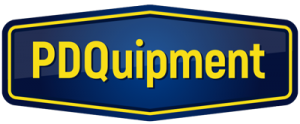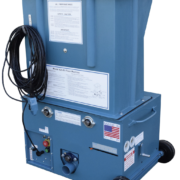What are The Key Features to Consider When Choosing Insulation Blowing Machines?
Insulation blowing machines help expedite the process of insulating structures in modern construction projects. The purpose of insulation is to increase energy efficiency and comfort inside a building. Selecting the right insulation blowing machine entails careful consideration to ensure optimal performance and suitability. Continue reading to learn about the key features to consider when choosing insulation blowing machines.
Capacity and Output
When selecting an insulation blowing machine, one of the primary considerations is its capacity and output capabilities. Capacity measures its ability to hold insulation material. For insulation blowing machines, the capacity is typically measured in cubic feet or pounds.
For larger projects requiring substantial insulation coverage, such as commercial buildings or multi-family residences, a machine with a higher capacity may be necessary to minimize downtime for refilling. Conversely, smaller-scale projects may benefit from a machine with a more modest capacity to avoid excess material waste and ensure efficient use of resources.
The output rate refers to the speed at which the machine can dispense insulation material during operation, which is measured in pounds per minute or cubic feet per hour.
The output rate directly impacts the efficiency and productivity of your work. A higher output rate allows for faster coverage of the insulation area, reducing labor time and increasing overall project efficiency. However, it’s essential to balance output rate with material consistency and quality to ensure uniform coverage and insulation performance.
Do your best to match the capacity and output rate to the specific requirements of your project to streamline the insulation installation process, minimize downtime, and achieve optimal results on the job site.
Versatility and Compatibility
A versatile insulation blowing machine is compatible with a wide range of insulation materials, including fiberglass, cellulose, and foam. Additionally, the machine should accommodate various application methods and installation techniques, allowing for seamless integration into different construction scenarios.
Portability and Maneuverability
Portability and maneuverability are also essential features, particularly for projects with multiple locations or challenging terrain. A compact and lightweight design facilitates easy transportation and maneuverability on job sites. Features such as wheels or handles further enhance mobility, allowing for convenient relocation as needed.
Ease of Use and Controls
An insulation blowing machine should feature intuitive controls and a user-friendly interface to simplify operation, enhance efficiency, and reduce the risk of errors. Manufacturers often provide training and support resources to ensure proper machine use and maintenance, further enhancing the ease of use.
Durability and Reliability
Durability and reliability are crucial considerations for insulation blowing machines because these factors directly impact the longevity and performance of the machine.
The durability of an insulation blowing machine is largely determined by the quality of its construction materials. Machines constructed from high-quality materials, such as heavy-duty steel or durable plastics, are better equipped to withstand the wear and tear associated with daily operation on construction sites.
Components that are subject to high levels of stress, such as the blower motor, auger, and hose connectors, should be made from robust materials too. Additionally, components exposed to abrasive insulation materials should be resistant to corrosion and erosion to maintain optimal performance over time.
The reputation of the manufacturer is another crucial factor to consider when assessing the durability and reliability of an insulation blowing machine. Established manufacturers with a track record of producing high-quality equipment are more likely to prioritize durability and reliability in their product designs.
Noise and Emissions
Noise levels and its emissions output while the machine is in operation are critical factors. Insulation blowing machines should adhere to noise regulations on job sites to minimize disruptions and ensure compliance. Additionally, emissions from the machine’s power source should be evaluated for their environmental impact and adherence to local regulations.
Safety Features
Safety features such as emergency shut-off switches and protective guards help prevent accidents and injuries, while compliance with safety standards and regulations ensures safe equipment operation. Look for insulation blowing machines with robust safety features to help establish and maintain a safe work environment for your workers.
Cost and Value
Lastly, when it comes to the cost and value of an insulation blowing machine, it’s crucial to consider its long-term value and performance benefits. While the initial purchase price is a significant factor, evaluating additional features, accessories, and warranty coverage can provide insight into the overall value proposition. Assessing both cost and the value of the machine can help ensure you get the best return on investment.
Choosing the right insulation blowing machine requires careful consideration of key features including capacity, versatility, durability, safety features, and more. If you’re in the market for insulation blowing machines, you’ve come to the right place. Click here to browse through our list of reliable and efficient machines.




